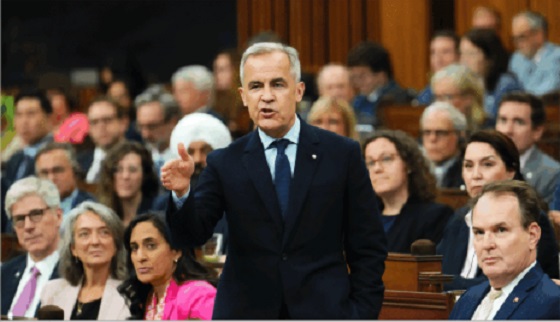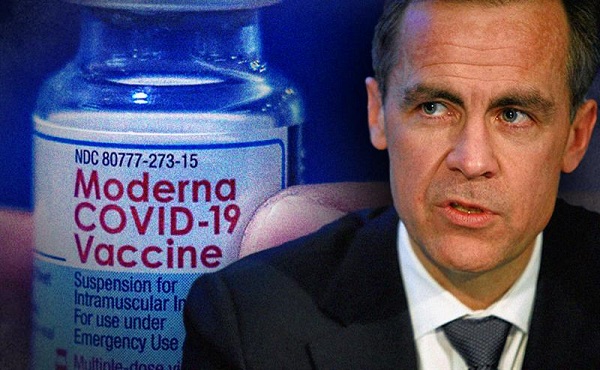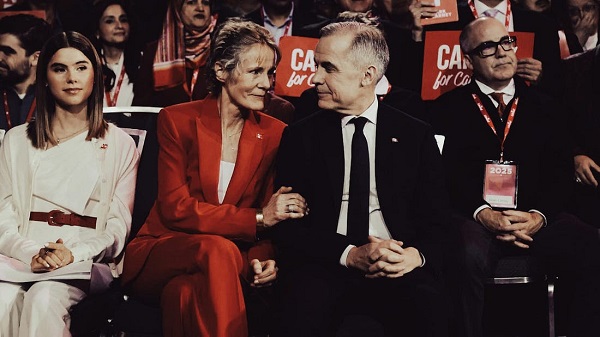Business
Government has inherent bias for more government

From the Fraser Institute
By Jason Clemens and Jake Fuss
One of the authors of this op-ed resides in a municipality, which recently launched an online survey to gauge the preferences of residents with respect to its upcoming budget, which is laudable, but the questions illustrate a problem within government: a bias for more government.
The City of Coquitlam in British Columbia asked respondents whether it should increase, decrease or simply maintain the same level of spending in 2025 for policing, recreation, water and sewage, infrastructure and others items. The problem: there wasn’t a single question on whether residents prefer tax reductions.
Moreover, there was no discussion or context about how increased spending for these activities must come from taxpayers in the form of either having more taxpayers (city population increases) and/or higher tax rates for those residing in the city. What’s clear from the survey is that the municipal government prefers to spend more.
And this bias towards more government within government is not restricted to this local municipality. Other municipalities, provincial governments and certainly the Trudeau federal government have favoured more spending.
Under Prime Minister Trudeau federal spending has reached never-before-seen levels, even after adjusting for inflation. Consider, for instance, that per-person federal spending (excluding interest costs) will reach $11,901 this fiscal year (inflation-adjusted), well above previous levels of per-person spending including during the 2008-09 financial crisis and both world wars. The rationale is that Ottawa is delivering services demanded by Canadians.
But is that true? Are Canadians demanding national pharmacare, national dental benefits and a national daycare program? The answer depends on whether the costs of those programs are included in the discussion.
A 2022 poll asked Canadians about their support for all three programs. Support ranged from 69 per cent for national daycare, to 72 per cent for dental care, to 79 per cent for pharmacare. Here’s the problem, though. The questions were asked without respondents considering any costs. In other words, the respondents were asked whether they support these programs assuming they don’t affect their taxes.
But of course, taxpayers must pay for government spending, and when those costs are included, Canadians are much less supportive. In the same poll, when increased spending is linked with an increase in the GST, support plummets to 36 per cent for daycare, 40 per cent for pharmacare and 42 per cent for dental care.
And these results are not unique. A 2020 poll by the Angus Reid Institute found 86 per cent support for a national prescription drug program—but that support drops by almost half (47 per cent) if a one-percentage point increase in the middle-class personal income tax rate is included.
One explanation for the dramatic change in support rests in another poll, which found that 74 per cent of respondents felt the average Canadian family was overtaxed.
So it’s convenient for governments to avoid connecting more spending with higher taxes.
This internal government support for more government also shows up in our tax mix. Canadian governments rely on less visible taxes than our counterparts in the OECD, a group of high-income, developed countries. For instance, Canadian governments collect 6.8 per cent of the economy (GDP) in consumption taxes such as the GST, which are quite visible and transparent because the cost shows up directly on your bill. That ranks Canada 31st of 38 OECD countries and well below the OECD average of 10.0 per cent.
Alternatively, we rely on personal income tax revenues to a much greater degree and, because these taxes are automatically deducted from the paycheques of Canadians, they are much less apparent to workers. Canada collects 12.3 per cent of the economy in personal income taxes, ranking us 6th highest for our reliance on personal income taxes and above the OECD average of 8.3 per cent.
And a complying media aids the push for more government spending. According to a recent study, when reporting on the announcement of three new federal programs (pharmacare, dental care and national daycare) the CBC and CTV only included the cost of these programs in 4 per cent of their television news coverage. Most of the coverage related to the nature of the new programs, their potential impact on Canadians, and the responses from the Conservative, NDP and Bloc Quebecois. Simply put, the main television coverage didn’t query the government on the cost of these new programs and how taxpayers would pay the bill, leaving many viewers with the mistaken impression that the programs are costless.
Indeed, it’s interesting to note that the same study found that 99.4 per cent of press releases issued by the federal government related to these three programs excluded any information on their costs or impact on the budget.
The inherent bias within government for more government is increasingly clear, and supported by a lack of skepticism in the media. Canadians need clearer information from government on the potential benefits and costs of new or expanded spending, and the media must do a better job of critically covering government initiatives. Only then can we realistically understand what Canadians actually demand from government.
Business
Mark Carney’s Fiscal Fantasy Will Bankrupt Canada

By Gwyn Morgan
Mark Carney was supposed to be the adult in the room. After nearly a decade of runaway spending under Justin Trudeau, the former central banker was presented to Canadians as a steady hand – someone who could responsibly manage the economy and restore fiscal discipline.
Instead, Carney has taken Trudeau’s recklessness and dialled it up. His government’s recently released spending plan shows an increase of 8.5 percent this fiscal year to $437.8 billion. Add in “non-budgetary spending” such as EI payouts, plus at least $49 billion just to service the burgeoning national debt and total spending in Carney’s first year in office will hit $554.5 billion.
Even if tax revenues were to remain level with last year – and they almost certainly won’t given the tariff wars ravaging Canadian industry – we are hurtling toward a deficit that could easily exceed 3 percent of GDP, and thus dwarf our meagre annual economic growth. It will only get worse. The Parliamentary Budget Officer estimates debt interest alone will consume $70 billion annually by 2029. Fitch Ratings recently warned of Canada’s “rapid and steep fiscal deterioration”, noting that if the Liberal program is implemented total federal, provincial and local debt would rise to 90 percent of GDP.
This was already a fiscal powder keg. But then Carney casually tossed in a lit match. At June’s NATO summit, he pledged to raise defence spending to 2 percent of GDP this fiscal year – to roughly $62 billion. Days later, he stunned even his own caucus by promising to match NATO’s new 5 percent target. If he and his Liberal colleagues follow through, Canada’s defence spending will balloon to the current annual equivalent of $155 billion per year. There is no plan to pay for this. It will all go on the national credit card.
This is not “responsible government.” It is economic madness.
And it’s happening amid broader economic decline. Business investment per worker – a key driver of productivity and living standards – has been shrinking since 2015. The C.D. Howe Institute warns that Canadian workers are increasingly “underequipped compared to their peers abroad,” making us less competitive and less prosperous.
The problem isn’t a lack of money; it’s a lack of discipline and vision. We’ve created a business climate that punishes investment: high taxes, sluggish regulatory processes, and politically motivated uncertainty. Carney has done nothing to reverse this. If anything, he’s making the situation worse.
Recall the 2008 global financial meltdown. Carney loves to highlight his role as Bank of Canada Governor during that time but the true credit for steering the country through the crisis belongs to then-prime minister Stephen Harper and his finance minister, Jim Flaherty. Facing the pressures of a minority Parliament, they made the tough decisions that safeguarded Canada’s fiscal foundation. Their disciplined governance is something Carney would do well to emulate.
Instead, he’s tearing down that legacy. His recent $4.3 billion aid pledge to Ukraine, made without parliamentary approval, exemplifies his careless approach. And his self-proclaimed image as the experienced technocrat who could go eyeball-to-eyeball against Trump is starting to crack. Instead of respecting Carney, Trump is almost toying with him, announcing in June, for example that the U.S. would pull out of the much-ballyhooed bilateral trade talks launched at the G7 Summit less than two weeks earlier.
Ordinary Canadians will foot the bill for Carney’s fiscal mess. The dollar has weakened. Young Canadians – already priced out of the housing market – will inherit a mountain of debt. This is not stewardship. It’s generational theft.
Some still believe Carney will pivot – that he will eventually govern sensibly. But nothing in his actions supports that hope. A leader serious about economic renewal would cancel wasteful Trudeau-era programs, streamline approvals for energy and resource projects, and offer incentives for capital investment. Instead, we’re getting more borrowing and ideological showmanship.
It’s no longer credible to say Carney is better than Trudeau. He’s worse. Trudeau at least pretended deficits were temporary. Carney has made them permanent – and more dangerous.
This is a betrayal of the fiscal stability Canadians were promised. If we care about our credit rating, our standard of living, or the future we are leaving our children, we must change course.
That begins by removing a government unwilling – or unable – to do the job.
Canada once set an economic example for others. Those days are gone. The warning signs – soaring debt, declining productivity, and diminished global standing – are everywhere. Carney’s defenders may still hope he can grow into the job. Canada cannot afford to wait and find out.
The original, full-length version of this article was recently published in C2C Journal.
Gwyn Morgan is a retired business leader who was a director of five global corporations.
Business
Carney Liberals quietly award Pfizer, Moderna nearly $400 million for new COVID shot contracts

From LifeSiteNews
Carney’s Liberal government signed nearly $400 million in contracts with Pfizer and Moderna for COVID shots, despite halted booster programs and ongoing delays in compensating Canadians for jab injuries.
Prime Minister Mark Carney has awarded Pfizer and Moderna nearly $400 million in new COVID shot contracts.
On June 30th, the Liberal government quietly signed nearly $400 million contracts with vaccine companies Pfizer and Moderna for COVID jabs, despite thousands of Canadians waiting to receive compensation for COVID shot injuries.
The contracts, published on the Government of Canada website, run from June 30, 2025, until March 31, 2026. Under the contracts, taxpayers must pay $199,907,418.00 to both companies for their COVID shots.
Notably, there have been no press releases regarding the contracts on the Government of Canada website nor from Carney’s official office.
Additionally, the contracts were signed after most Canadians provinces halted their COVID booster shot programs. At the same time, many Canadians are still waiting to receive compensation from COVID shot injuries.
Canada’s Vaccine Injury Support Program (VISP) was launched in December 2020 after the Canadian government gave vaccine makers a shield from liability regarding COVID-19 jab-related injuries.
There has been a total of 3,317 claims received, of which only 234 have received payments. In December, the Canadian Department of Health warned that COVID shot injury payouts will exceed the $75 million budget.
The December memo is the last public update that Canadians have received regarding the cost of the program. However, private investigations have revealed that much of the funding is going in the pockets of administrators, not injured Canadians.
A July report by Global News discovered that Oxaro Inc., the consulting company overseeing the VISP, has received $50.6 million. Of that fund, $33.7 million has been spent on administrative costs, compared to only $16.9 million going to vaccine injured Canadians.
Furthermore, the claims do not represent the total number of Canadians injured by the allegedly “safe and effective” COVID shots, as inside memos have revealed that the Public Health Agency of Canada (PHAC) officials neglected to report all adverse effects from COVID jabs and even went as far as telling staff not to report all events.
The PHAC’s downplaying of jab injuries is of little surprise to Canadians, as a 2023 secret memo revealed that the federal government purposefully hid adverse effect so as not to alarm Canadians.
The secret memo from former Prime Minister Justin Trudeau’s Privy Council Office noted that COVID jab injuries and even deaths “have the potential to shake public confidence.”
“Adverse effects following immunization, news reports and the government’s response to them have the potential to shake public confidence in the COVID-19 vaccination rollout,” read a part of the memo titled “Testing Behaviourally Informed Messaging in Response to Severe Adverse Events Following Immunization.”
Instead of alerting the public, the secret memo suggested developing “winning communication strategies” to ensure the public did not lose confidence in the experimental injections.
Since the start of the COVID crisis, official data shows that the virus has been listed as the cause of death for less than 20 children in Canada under age 15. This is out of six million children in the age group.
The COVID jabs approved in Canada have also been associated with severe side effects, such as blood clots, rashes, miscarriages, and even heart attacks in young, healthy men.
Additionally, a recent study done by researchers with Canada-based Correlation Research in the Public Interest showed that 17 countries have found a “definite causal link” between peaks in all-cause mortality and the fast rollouts of the COVID shots, as well as boosters.
Interestingly, while the Department of Health has spent $16 million on injury payouts, the Liberal government spent $54 million COVID propaganda promoting the shot to young Canadians.
The Public Health Agency of Canada especially targeted young Canadians ages 18-24 because they “may play down the seriousness of the situation.”
-

 Fraser Institute1 day ago
Fraser Institute1 day agoBefore Trudeau average annual immigration was 617,800. Under Trudeau number skyrocketted to 1.4 million annually
-

 MAiD1 day ago
MAiD1 day agoCanada’s euthanasia regime is already killing the disabled. It’s about to get worse
-

 Frontier Centre for Public Policy1 day ago
Frontier Centre for Public Policy1 day agoNew Book Warns The Decline In Marriage Comes At A High Cost
-

 Business1 day ago
Business1 day agoPrime minister can make good on campaign promise by reforming Canada Health Act
-

 Addictions1 day ago
Addictions1 day ago‘Over and over until they die’: Drug crisis pushes first responders to the brink
-

 International1 day ago
International1 day agoChicago suburb purchases childhood home of Pope Leo XIV
-

 Daily Caller1 day ago
Daily Caller1 day agoUSAID Quietly Sent Thousands Of Viruses To Chinese Military-Linked Biolab
-

 Business2 days ago
Business2 days ago103 Conflicts and Counting Unprecedented Ethics Web of Prime Minister Mark Carney





